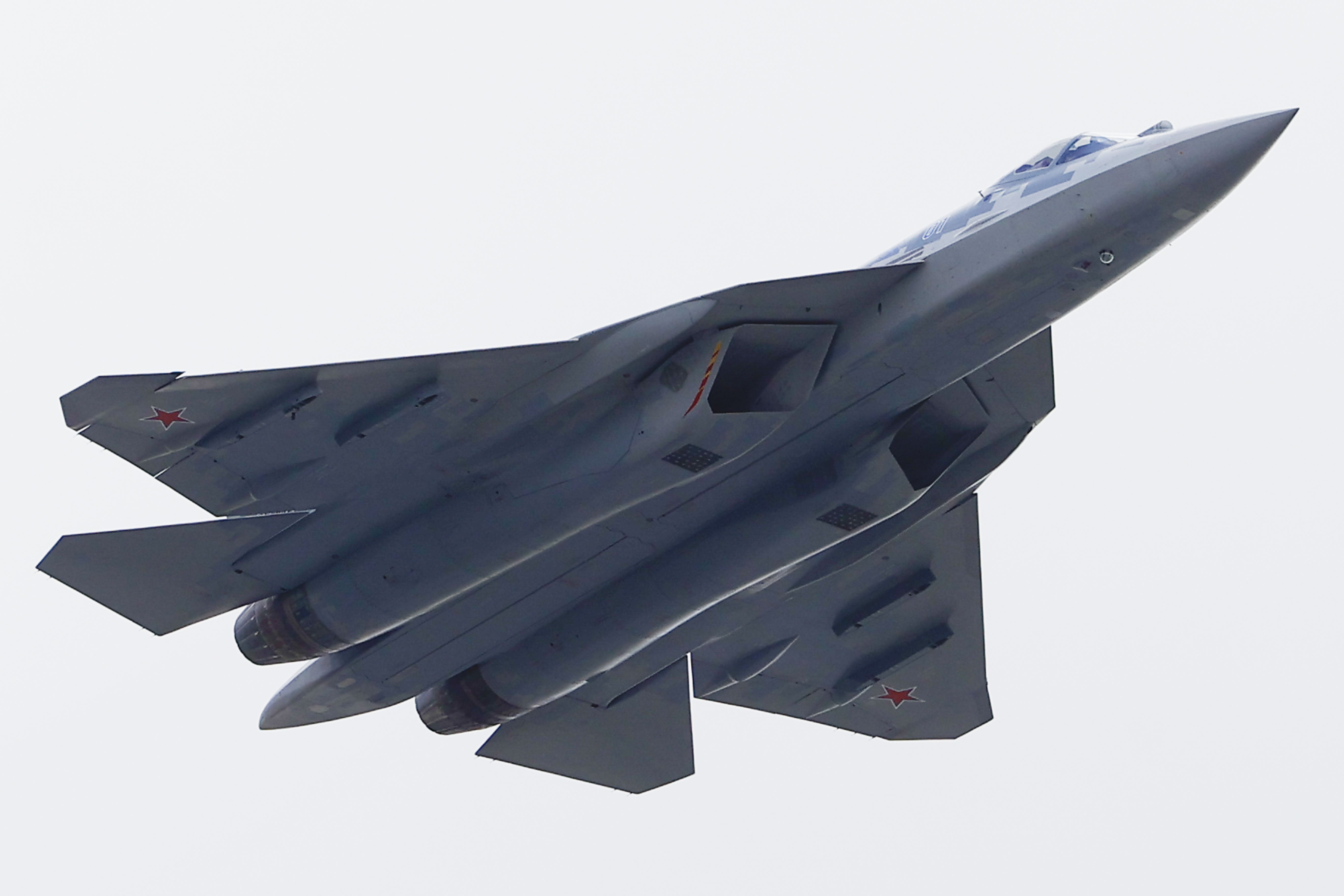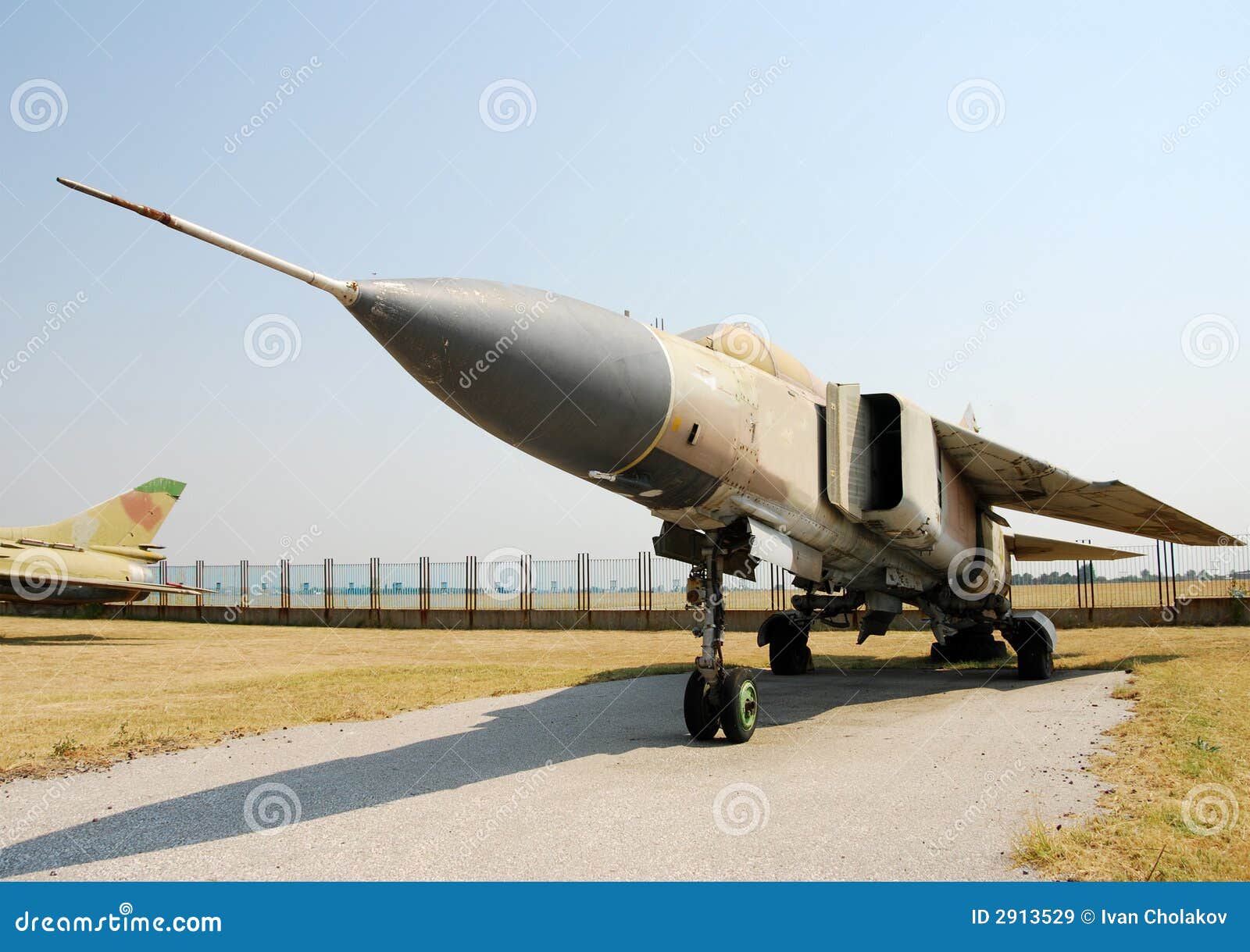Cold War Fighter Jet - The end of World War II in 1945 led to a predictable decline in military mass production and supply across the United States, but the war also ushered in a brave new world of jet power, with many nations on both sides of the bloody conflict fielding fighter jets. fight. There was no turning back: the race was on.
As the war ended, the US government began heavily funding contracts for the development of jet-powered fighter and bomber concepts. GE Aviation in Lynn, Massachusetts hosted a day of action. introduced America's first jet engine in 1942, GE Lean's early turbojet engines included the axial-flow J35 turbojet engine, which became America's most popular military jet engine immediately after the war. In 1946, the Linn team took the bold step of presenting the government with a new axial-flow turbojet successor called the J47, even before a specific aircraft had been determined. As time went on, it didn't take long for GE to sell the engine development concept to the military.
Cold War Fighter Jet

With famed GE engineer Neil Burgess leading the project, Lean engineers quickly designed the J35-sized axial-flow J47 compressor and turbine components for the high pressure ratio and lightweight components needed to generate 5,000 pounds of thrust. .
The Slowly Fading Art Of Flying—and Maintaining—cold War Fighter Jets
The J47 was a bold move. Dubbed the "all-air engine", the J47 was the first turbojet to feature an anti-icing system with hollow frame mounts that allowed hot air to pass through the supercharger. The anti-icing system, developed primarily by Burgess and Joe Bushell, was key to the high-altitude fighter mission. GE spent several months testing the system in a test chamber on Mount Washington in New Hampshire's White Mountains, where winds can blow up to 140 miles per hour in bitterly cold conditions. To increase the aircraft's power during takeoff and acceleration at altitude, the J47 used the first electronically controlled vacuum tubes, a design led by Ed Wall, a young, gentle engineer who would go on to play a key role in the company's growing jet engine development.
However, in the postwar US economy, some GE executives began to question the long-term commercial viability of the fledgling jet industry. Lin's team didn't feel it.
When J47 production began at Lynn in 1948, general manager Harold Kelsey used a second assembly line to create additional in-house production capacity for the company's new flagship turbojet engine. At the urging of the US Air Force, GE chose the former Wright Aeronautics Plant in Lockland, Ohio, which had been destroyed after World War II. That same year, J47 engines were installed in the North American F-86 Sabre, which set a world speed record of 670.9 mph.
Despite these technical successes, he faced a major challenge. In 1949, as defense cuts under President Harry S. Truman intensified, the prospect of the J47 becoming a major production program faded, and GE considered closing the new Lockland plant. Then, seemingly overnight, the Korean War broke out in June 1950 and demand for the J47 increased.
Theoretical Cold War Fighter Jet By Thevigil24 On Deviantart
The F-86 Saber became America's primary fighter in the Korean War. The first swept-wing fighter in the USF arsenal, the F-86 was fast and maneuverable, powered by the J47 afterburner. The F-86 established air superiority over Korea with an estimated kill ratio of 14 to 1 against MiG-15 fighters. Another popular J47-powered jet for the US Air Force in Korea was the high-speed, fearsome Boeing B-47 Stratojet.
The Korean War saw the first real air-to-air combat between jet-powered fighters, and the whole world was watching. Even GE's biggest optimists didn't imagine how ubiquitous the J47 turbojet would become in US military aviation over the next 10 years as the Cold War escalated into a confrontation with the Soviet Union. By the mid-1950s, it had proven itself in the skies over Korea, the J47 operated at the very front line of US military aircraft - the F-86, B-47, Convair B-36 Bomber, North American B-45 Tornado, Martin B-51 Bomber and Northrop YB-49 Flying Wing.
Dubbed the "all-air engine", the J47 was the first turbojet to feature an anti-icing system with hollow frame mounts that allowed hot air to pass through the supercharger.

During this time, the Lockland plant grew from 1,200 workers in 1949 to 8,000 workers in 1954 behind an aggressive recruitment program throughout the region. The J47's engineering headquarters moved to Lockland, which was soon renamed the Avondale facility, where it became America's most produced jet engine. A number of production innovations have been implemented, including a vertical motor mount to maintain balance and stability of the production ramp compressor rotor.
The Day Soviet Aircraft Attacked American Pilots
The J47 became GE Aviation's financial bread and butter. In 1953-1954, production reached an astonishing 975 engines per month. In addition to the Lockland and Lynn plants, the engine was produced under license by the American automotive companies Studebaker and Packard Automotive. An unprecedented 10-year production run ended in 1956. At that time, FIAT of Italy and Ishikawajima-Harima of Japan joined GE, and both automakers produced the engine.
In total, more than 35,000 J47s were built, making it the most produced jet engine in aviation history. The program established GA Aviation as a leader in jet propulsion for the next six decades.
A 1948 GE commercial touting the J47's record-breaking capability as installed in the North American F-86 Sabre, reaching a world speed of 670.9 mph. An F-16 Fighting Falcon (left), a P-51D Mustang (bottom), an F-86 Saber (top) and an F-22 Raptor (right) flying in formation in support of four U.S. fighter jets.
Fighters are fixed-wing military aircraft designed primarily for air-to-air combat. In a military conflict, the task of combat aircraft is to ensure air superiority over the battlefield. Airspace dominance over the battlefield allows bombers and aircraft to scout M targets for tactical and strategic bombing.
British Cold War Fighters: Amazon.co.uk: Mclelland, Tim: 9781781551004: Books
The main performance characteristics of the fighter include not only its firepower, but also its high speed and maneuverability relative to the target aircraft. The success or failure of a fighter's efforts to achieve air superiority depends on a number of factors, including the skill of its pilots, the tactical approach to fighter deployment, and the number and performance of those fighters.
Many modern combat aircraft have secondary capabilities, such as ground attack, and some types, such as fighter-bombers, were originally designed for dual roles. Other fighter designs are more specialized when it comes to filling the primary air superiority role, including the diver, heavy fighter, and night fighter.
A type of GV may be designed for specific combat situations and in some cases for additional roles such as air-to-ground combat. Historically, the British Royal Flying Corps and Royal Air Force called them "Scouts" until the early 1920s, while the US Army called them "Chasers" until the late 1940s. The United Kingdom in the 1920s called them fighters

Of these, fighter-bomber, reconnaissance and strike units are dual-role with fighter characteristics alongside other battlefield roles. Some fighter designs may be developed with variants that are more dedicated to other missions such as ground attack or unarmed reconnaissance. This may be for political or national security, advertising or other reasons.
Fantasy Cold War Jet Fighter West German By Dcmstarships On Deviantart
Sopwitt's Camel and other First World War "Fighting Scouts" did ground attack work. During World War II, the USAAF and RAF often supported fighters with light bombers or dive bombers, and uncompetitive air fighters such as the Republic P-47 Thunderbolt and Hawker Hurricane were relegated to ground attack. A number of aircraft, such as the F-111 and F-117, received fighter designations even though they lacked combat capability for political and other reasons. The F-111B variant was originally intended for a combat role with the US Navy, but was canceled. This blurring follows the ancient use of fighters to "attack" or "strike" targets by placing targets on the ground and dropping small bombs and explosives. Universal multirole fighter-bombers such as the McDonnell Douglas F/A-18 Hornet are a less expressive alternative to a variety of aircraft types.
Highly distinctive fighters such as the US Grumman F-14 Tomcat, McDonnell Douglas F-15 Eagle, Lockheed Martin F-22 Raptor and the Russian Sukhoi Su-27 were used as all-weather interceptors as well as air superiority fighters. They usually develop air-to-ground roles late in their careers. An interceptor is usually an aircraft designed to attack (or intercept) bombers and often trades maneuverability against takeoff speed.
As part of the military designation, different types of aircraft are assigned a letter to indicate their use and a number to identify the specific aircraft. The letters used to denote a warrior vary from country to country. In the Gaelic-speaking world "F" is often used for a fighter (eg Lockheed Martin F-35 Lightning II or Supermarine Spitfire F.22), although in the US "P" is used for a fighter (eg Curtiss P-40). Warhawk), Frich's "C" (Dewoitine D.520 C.1) translated Chasseur, while "I" was used in Russia.
Cold war fighter jets, world war 2 fighter jet, free fighter jet war games, jet fighter war games, cold war jet, jet fighter war, jet-fighter, war thunder jet fighter, cold fighter, fighter jet, cold jet, cold war fighter planes
0 Comments